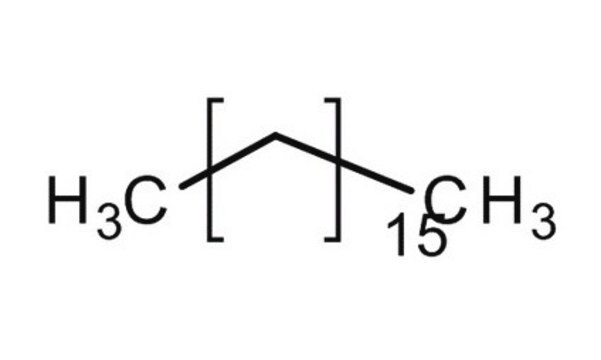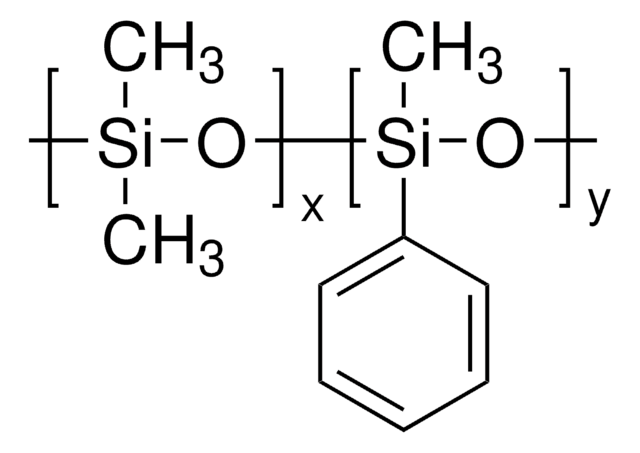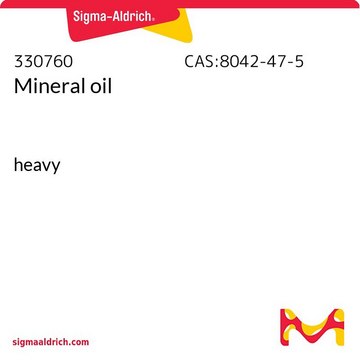Wichtige Dokumente
128503
Heptadecan
99%
Synonym(e):
n-Heptadecane
About This Item
Empfohlene Produkte
Dampfdichte
8.3 (vs air)
Dampfdruck
1 mmHg ( 115 °C)
Assay
99%
Brechungsindex
n20/D 1.436 (lit.)
bp
302 °C (lit.)
mp (Schmelzpunkt)
20-22 °C (lit.)
Dichte
0.777 g/mL at 25 °C (lit.)
SMILES String
CCCCCCCCCCCCCCCCC
InChI
1S/C17H36/c1-3-5-7-9-11-13-15-17-16-14-12-10-8-6-4-2/h3-17H2,1-2H3
InChIKey
NDJKXXJCMXVBJW-UHFFFAOYSA-N
Suchen Sie nach ähnlichen Produkten? Aufrufen Leitfaden zum Produktvergleich
Anwendung
Signalwort
Danger
H-Sätze
Gefahreneinstufungen
Asp. Tox. 1
Lagerklassenschlüssel
10 - Combustible liquids
WGK
WGK 1
Flammpunkt (°F)
300.2 °F - closed cup
Flammpunkt (°C)
149 °C - closed cup
Persönliche Schutzausrüstung
Eyeshields, Gloves
Hier finden Sie alle aktuellen Versionen:
Besitzen Sie dieses Produkt bereits?
In der Dokumentenbibliothek finden Sie die Dokumentation zu den Produkten, die Sie kürzlich erworben haben.
Kunden haben sich ebenfalls angesehen
Unser Team von Wissenschaftlern verfügt über Erfahrung in allen Forschungsbereichen einschließlich Life Science, Materialwissenschaften, chemischer Synthese, Chromatographie, Analytik und vielen mehr..
Setzen Sie sich mit dem technischen Dienst in Verbindung.











